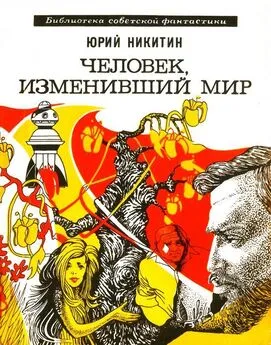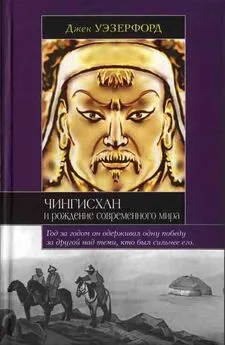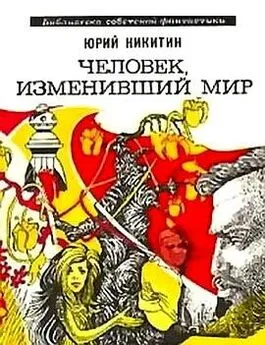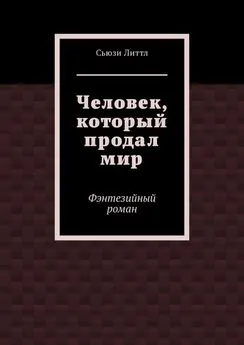Фрэнк Маклинн - Чингисхан. Человек, завоевавший мир
- Название:Чингисхан. Человек, завоевавший мир
- Автор:
- Жанр:
- Издательство:АСТ
- Год:2019
- Город:Москва
- ISBN:978-5-17-095186-4
- Рейтинг:
- Избранное:Добавить в избранное
-
Отзывы:
-
Ваша оценка:
Фрэнк Маклинн - Чингисхан. Человек, завоевавший мир краткое содержание
Чингисхан. Человек, завоевавший мир - читать онлайн бесплатно ознакомительный отрывок
Интервал:
Закладка:
85
Boyd & Houpt, Przewalski's Horse . Whereas most wild horses are feral (previously domesticated), the Przewalski's horse is truly wild (Tatjana Kavar & Peter Dove, 'Domestication of the Horse; Genetic Relationships between Domestic and Wild Horses,' Livestock Science 116 (2008) pp. 1–14; James Downs, 'The Origin and Spread of Riding in the Near East and Central Asia,' American Anthropologist 63 (1961) pp. 1193–1230).
86
Lattimore, Inner Asian Frontiers p. 168; White, Medieval Technology pp. 15–17.
87
Ладонь — 4 дюйма, или 10,16 см. — Прим. пер.
88
Hendrick, Horse Breeds p. 287; Neville, Traveller's History p. 14; Severin, In Search of Genghis Khan p. 50.
89
S. Jagchid & C. R. Bawden, 'Some Notes on the Horse Policy of the Yuan Dynasty,' Central Asiatic Journal 10 (1965) pp. 246–265 (at pp. 248–250).
90
Carruthers, Unknown Mongolia II p. 133.
91
Gumilev, Imaginary Kingdom p. 120.
92
Lattimore, Mongol Journeys p. 193: Jagchid & Bawden, 'Horse Policy,' pp. 248–250.
93
H. Desmond Martin, 'The Mongol Army,' Journal of the Royal Asiatic Society I (1943) pp. 46–85.
94
Hyland, Medieval Warhorse p. 129.
95
Hyland, Medieval Warhorse p. 131.
96
De Windt, From Pekin p. 112.
97
Hyland, Medieval Warhorse pp. 133–134.
98
Waugh, Marco Polo p. 57.
99
Hyland, Medieval Warhorse p. 130. In any case, 'Keeping all males entire would have led to absolute chaos in the droves of horses that travelled as back-up mounts in a Mongol army' (ibid. p. 129).
100
Hyland, Medieval Warhorse p. 130.
101
Ламинит — ревматическое воспаление копыт. — Прим. ред.
102
Jagchid & Bawden, 'Horse Policy,' p. 249–250.
103
Asimov & Bosworth, History of Civilizations iv part 2 p. 282. There are 153 species of mammals, 105 species of fish and 79 of reptiles. The number of bird species is disputed, depending on technical arguments over taxonomy, but is usually assessed as between 459 and 469.
104
Lattimore, Mongol Journeys p. 165.
105
For the many Mongol encounters with lions see Bretschneider, Mediaeval Researches I pp. 31, 148–149; II pp. 134, 265–266, 270, 293, 295. The Mongols sometimes hunted lions (Lane, Daily Life p. 17). Bretschneider (i p. 116) mentions a Mongol lion hunt in which ten lions were killed.
106
Древнее название Амударьи. — Прим. пер.
107
JB II p. 613.
108
Wilson & Reeder, Mammal Species p. 548; Helmut Henner, 'Uncia uncia,' Mammalian Species 20 (1972) pp. 1–5; Sunquist, Wild Cats рр . 377–394; Buell, Historical Dictionary p. 119.
109
Jackson & Morgan, Ruhruck p. 142; Pelliot, Recherches sur les Chretiens pp. 91–92; Rockhill, Land of the Lamas pp. 157–158. The quote is from De Windt, From Pekin p. 114.
110
Wilson & Reeder, Mammal Species pp. 754–818; Lattimore, Mongol Journeys pp. 256–258; Severin, Search pp. 219–220.
111
Asimov & Bosworth, History of Civilizations iv part 2 p. 286; Bretschneider, Mediaeval Researches I pp. 98, 130; Lattimore, Mongol Journeys p. 170.
112
Bretschneider, Mediaeval Researches, I pp. 31, 128,143–145; II р. 250.
113
De Windt, From Pekin p. 146, 220; Bretschneider, Mediaeval Researches II p. 192; Hue, High Road pp. 43–44; Lattimore, Mongoljoumeys p. 166.
114
Skelton, Marston & Painter, Vinland Map p. 86.
115
Также Виллем, Гийом, Гильом. — Прим. ред .
116
Jackson & Morgan, Rubruck p. 89.
117
Dawson, Mongol Mission pp. 6–7.
118
Blake & Frye, Grigor of Akanc p. 295.
119
Lane, Daily Life.
120
Dawson, Mongol Mission p. 18; Jackson & Morgan, Rubruck p. 89.
121
Schuyler Cammann, 'Mongol Costume, Historical and Recent,' in Sinor, Aspects pp. 157–166.
122
Другие варианты — «богта», «бугтак», «бугта», «бокка», «бока». — Прим. пер .
123
Dawson, Mongol Mission pp. 7–8; Jackson & Morgan, Rubruck p. 89; Bretschneider, Mediaeval Researches I pp. 52–53; Yule, Cathay and the Way Thither (1866 ed.) II p. 222; Arthur Waley, Travels of an Alchemist p. 67.
124
Jackson & Morgan, Rubruck pp. 72–73; Waley, Travels op. cit. p. 66; Schuyler Cammann, 'Mongol dwellings, with special reference to Inner Mongolia,' in Sinor, Aspects pp. 17–22; Jagchid & Hyer, Mongolia's Culture pp. 62–67; cf also Torvald Faegne, Tents.
125
Dawson, Mongol Mission p. 17.
126
Jackson & Morgan, Rubruck pp. 79, 84; JB I p. 21; J. A. Boyle, 'Kirakos of Ganjak on the Mongols,' Central Asiatic Journal 8 (1963); Matthew Paris, Chronica Majora iv. pp. 76–77, 388; vi p. 77; d'Ohsson, Histoire.
127
Gregory G. Guzman, 'Reports of Mongol Cannibalism in the 13th Century in Latin Sources: Oriental Fact or Western Fiction?' in Westrem, Discovering New Worlds pp. 31–68; L. Hambis, 'L'histoire des Mongols avant Genghis-khan d'apres les sources chinoises et mongoles, et la documentation conservee par Rasid-al-Din,' Central Asiatic Journal 14 (1970) pp. 125–133 (atp. 129).
128
Jackson & Morgan, Rubruck pp. 76, 80–83,175; Dawson, Mongol Mission pp. 16–17; Pelliot, Notes sur Marco Polo I p. 240; Yule & Cordier, Ser Marco Polo I pp. 259–260; Hildinger, Story of the Mongols (1966) p. 17.
129
Boyle, 'Kirakos of Ganjak,' p. 21; Hildinger, Story p. 17; d'Ohsson, Histoire II pp. 59, 86,107, 204.
130
Jackson & Morgan, Rubruck p. 108.
131
Joseph F. Fletcher, 'The Mongols: Ecological and Social Perspectives,' p. 14.
132
Walter Goldschmidt, 'A General Model for Pastoral Social Systems,' in Equipe Ecologie, Pastoral Production and Society pp. 15–27.
133
Градуализм — область экономики, изучающая пути и закономерности постепенного перехода экономической системы из одного состояния в другие. — Прим. ред .
134
Joseph F. Fletcher, 'The Mongols: Ecological and Social Perspectives,' pp. 39–42.
135
Christian, History of Russia I pp. 81–85.
136
For Carpini's allegations see Dawson, Mongol Mission pp. 17–18.
137
For Carpini's allegations see Dawson, Mongol Mission p. 103; Jackson & Morgan, Rubruck p. 91.
138
Vladimirtsov, Le regime social p. 35.
139
Cribb, Nomads (1991) p. 18.
140
RT I pp. 113–120; SHC pp. 1–10.
141
Gumilev, Imaginary Kingdom p. 89.
142
Относящегося к мифологической реке Стикс. — Прим. ред .
143
SHC p. 11; Louis Hambis, 'L'Histoire des Mongols avant Genghis-khan' Central Asiatic Journal 14 (1970) pp. 125–133; Franke & Twitchett, Cambridge History p. 330; Vladimirtsov, Life of Genghis p. n.
144
Lattimore, 'The Geographical Factor,' The Geographical Journal 91 (1938) pp. 14–15; Lattimore, Studies in Frontier History (1962) pp. 241–258. For the Uighurs see Mackerras, Uighur Empire.
145
RT I pp. 120–123; SHC p. 11; Rachewiltz, Commentary pp. 296, 316; Buell, Dictionary pp. 105, 218, 229.
146
Gumilev, Imaginary Kingdom pp. 94–95. For a lucid overall survey see Fletcher, Studies pp. 12–13.
147
For the Naiman see RT I pp. 67–70; Hambis, Gengis Khan pp. 7–22; Wittfogel & Feng, Liao p. 50; S. Murayama, 'Sind die Naiman Turken oder Mongolen?' Central Asiatic Journal 4 (1959) pp. 188–198; Pelliot & Hambis, Campagnes pp. 215–221, 299–311; Roemer et al, History of the Turkic Peoples; W Barthold, '12 Vorlesungen iiber die Geschichte der Turken Mittelasiens,' in Die Welt des Islams 17 (1935) p. 151.
148
The Kereit have attracted a lot of attention. RT I pp. 61–67; Togan, Flexibility and Limitation, esp. pp. 60–67; D. M. Dunlop, 'The Kerait of Eastern Asia,' Bulletin of the School of Oriental and Ajrican Studies 11 (1944) pp. 276–289; Pelliot & Hambis, Campagnes pp. 207–209; Erica D. Hunter, 'The conversion of the Keraits to Chrstianity in ad 1007,' Zentralasiatische Studien 22 (1991) pp. 142–163.
149
RT I pp. 43–55; Wittfogel & Feng, Liao pp. 101–102, 528, 573–598; Togan, Flexibility pp. 66–68; Louis Hambis, 'Survivances de toponymes de l'epoque mongole en Haute Asie,' in Melanges de sinologie ojferts a Monsieur Paul Demieville, Bibliotheque de I'lnstitut des Hautes Etudes Chinoises, 20 (1974) pp. 19–41 (at pp. 26–29); S. G. Kljastornys, 'Das Reich der Tartaren in der Zeit von Cinggis Khan,' Central Asiatic Journal 36 (1992) pp. 72–83; Pelliot & Hambis, Campagnes pp. 2–9.
150
Также Косогол, Хувсгел, Хевсгел-нуур. — Прим. пер.
151
RT I pp. 52–54; JB I p. 63; Pelliot & Hambis Campagnes pp. 227–228, 271–278.
152
RT I pp. 125–129; SHC p. n; Ratchnevsky, Genghis Khan pp. 9–10. But some sceptics say the insults allegedly offered by Qabul on these occasions should not be taken literally but read allegorically as indicating the generally poor state of Mongol-Jin relations (see Grousset, Empire of the Steppes p. 197).
153
Barfield, Perilous Frontier p. 183.
154
Asimov & Bosworth, History of Civilizations iv part 1 p. 246. But see the contrary case argued in N. Iszamc, 'L'etat feodal mongol et les conditions de sa formation,' Etudes Mongoles 5 (1974) pp. 127–130.
155
Louis Hambis, 'Un episode mal connu de l'histoire de Gengis khan,' Journal des Savants (January-March 1975) pp. 3–46.
156
Tamura Jitsuzo, 'The Legend of the Origin of the Mongols and Problems Concerning their Migration,' Acta Asiatica 24 (1973) pp. 9–13; Barthold, Turkestan (1928) p. 381; Paul Pelliot, 'Notes sur le "Turkestan" de W Barthold,' T'oung Pao 27 (1930) pp. 12–56 (at p. 24).
Читать дальшеИнтервал:
Закладка:


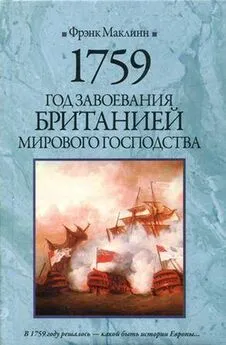
![Ксения Чепикова - Человек, научивший мир читать [История Великой информационной революции]](/books/1059757/kseniya-chepikova-chelovek-nauchivshij-mir-chitat-ist.webp)
